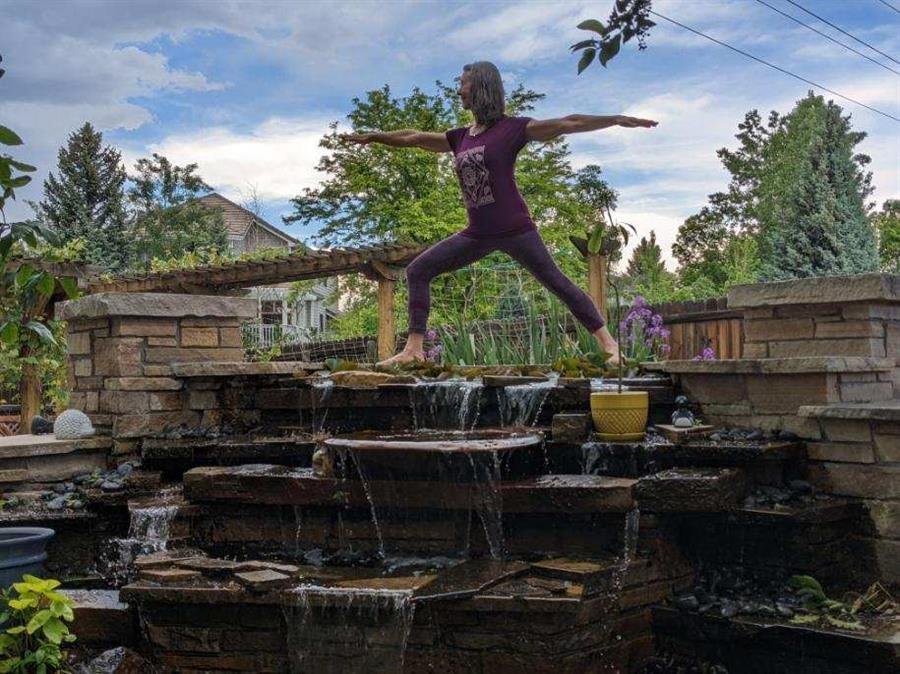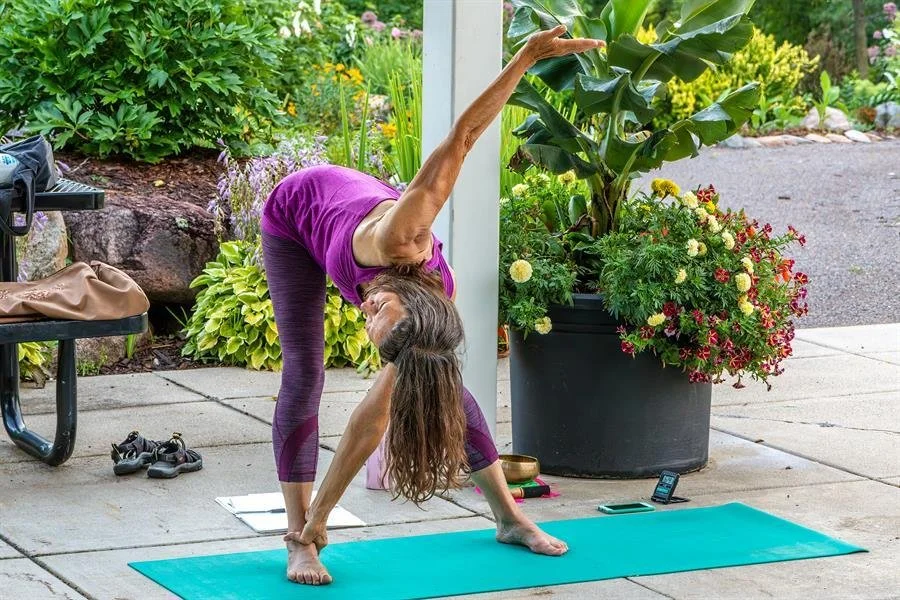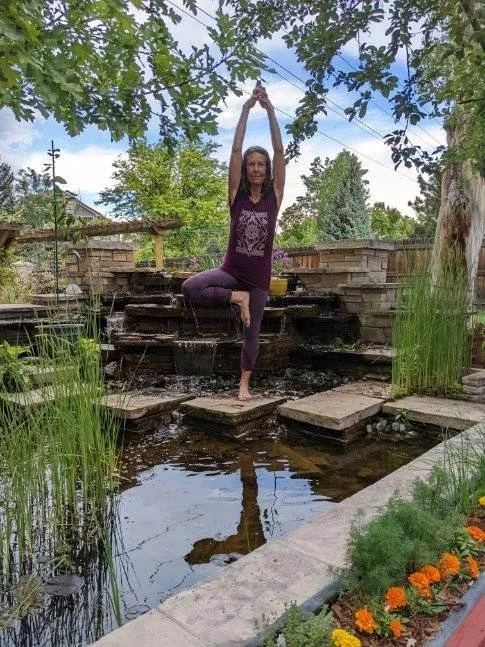About
About Cathy Skrip, E-RYT 200, YACEP, MS, LP
Cathy L. Skrip, E-RYT 200, YACEP, MS, LP is a Registered Yoga Teacher (RYT) with Yoga Alliance, which acknowledges the completion of yoga teacher training with a Registered Yoga School (RYS). She is also a Certified Grief Yoga® Teacher.
Cathy believes the practice of yoga can be life altering. She teaches bodies to inform minds and movement to follow breath. She encourages the ethics of yoga, such as non-violence, truthfulness, contentment, and self discipline to extend beyond the mat. She enjoys introducing yoga to beginning students, aims to make yoga accessible to anyone interested, and loves building a sense of yoga community.
Cathy began yoga teacher training after closing her daily private practice of 23 years as a licensed psychologist, where she specialized in serving individuals dealing with life adjustments, mood and anxiety issues, and histories of trauma. Her years of focus on mindfulness add depth to her teaching of yoga.
Cathy is grateful to all of her teachers. She initially trained in the IYT tradition of yoga with Susan Perry, who learned directly from Joseph LePage at Kripalu. She also completed Trauma Sensitive Yoga training through Firefly Yoga International with Annie Kiel and enjoys ongoing continuing education for both psychology and yoga.
Most recently, Cathy completed Grief Yoga® Teacher Training with Paul Denniston, also Kripalu trained and the founder of Grief Yoga®.

“Letting go gives us freedom, and freedom is the only condition for happiness. If, in our heart, we still cling to anything - anger, anxiety, or possessions - we cannot be free.”
— Thich Nhat Hanh, The Heart of the Buddha's Teaching: Transforming Suffering into Peace, Joy, and Liberation
A Welcome Message from Cathy
Hello and welcome! I would like to share some basic information that might be helpful as you get ready to begin or continue your yoga practice and would also like to explain a bit about my teaching style.
The first skill that I would recommend bringing to your mat or chair is the skill of non-judgment. Yoga is a practice, meaning that the more you do it, the more naturally it will come to you. Don’t expect to look like some yogi on the front cover of a yoga journal! Just be open to learning as you go, and you will gradually move more easily and deeply into each pose.
Yoga is non-competitive, so take your focus inward, rather than watching the person next to you. Once you become familiar with the poses, you might even find yourself practicing with your eyes closed!
Yoga involves the body, mind, and breath. The basic guidelines are for your movement to follow your breath and your body to inform your mind. This is what makes yoga different than just exercising.
Yoga is not religious, although it may feel spiritual at times.
Anyone can do yoga! There are always adaptations you can make if certain poses are not comfortable or accessible to you. Please let me know if you have medical conditions, and I might be able to suggest some adaptations. For instance, if you have high blood pressure, it is best to keep your head above the level of your heart, when doing inverted poses.
At a practical level, you will need to have a yoga mat so that you have a stable and non-slippery base. It is best to do yoga in bare feet. Wear comfortable clothes that don’t get in your way and that allow you to move easily. Avoid dangly, jangly jewelry.
Have water available as you practice, and drink some water afterwards. Yoga is similar to massage, in that it may release toxins from your fascia and muscles into your blood stream so you will want to flush those toxins out.
Yoga blocks and straps are recommended to help with alignment. These can be purchased at places like Target, REI, or online, but you can also improvise. A lightweight scarf, bathrobe sash, or belt can be used as a strap. You can tape a shoebox shut, put a rubber band around a thick book, or use a weight in place of a block. Just get yourself going with yoga first, and then you can decide if you want to invest in more equipment.
Yoga has been around for centuries, so I will sometimes use the Sanskrit words for poses or concepts. It is not important for you to learn these words, but some of them will become familiar to you over time. I like to learn and occasionally use Sanskrit because I think it gives a sense of the depth and long history of yoga. However, I would never want my language to feel intimidating to you.
There are many different traditions of yoga. I was trained and continue to teach in a tradition called Integrative Yoga Therapy or IYT. This tradition integrates elements from other traditions and focuses on all eight “limbs” of yoga, not just the physical postures, which are the 3rd limb. Briefly, the first two limbs have to do with guidelines for practice and life — restraints like non-violence and non-indulgence, and observances like contentment and self-study. The other limbs have to do with life force/breath, inward focus, concentration, meditation, and higher awareness. So, I usually start each class with some breathing and weave a theme through each session. While you will practice the same poses over and over, I try to build variety and different sequencing into each class to promote strength, balance, and flexibility. I typically begin the physical practice by warming up and then slow down to release at the end. I conclude each session with some quiet time and generally offer a poem or some type of meditative reading. We end with communal breath and a Namaste, which means The Light in me honors the Light in you.
I am always open to feedback and questions and allow a few minutes of check-in time at the beginning and end of each class. I look forward to practicing with you.
Namaste, Cathy

